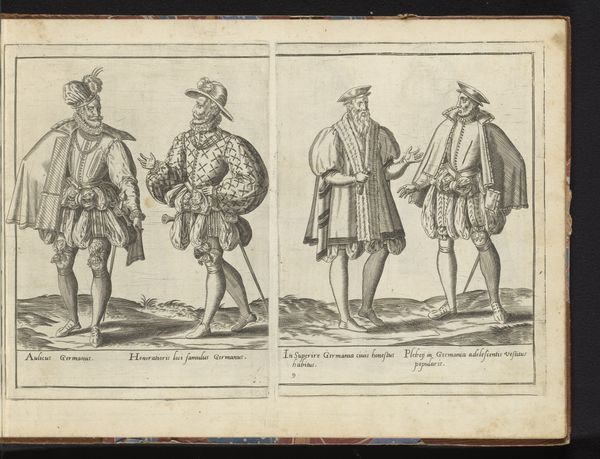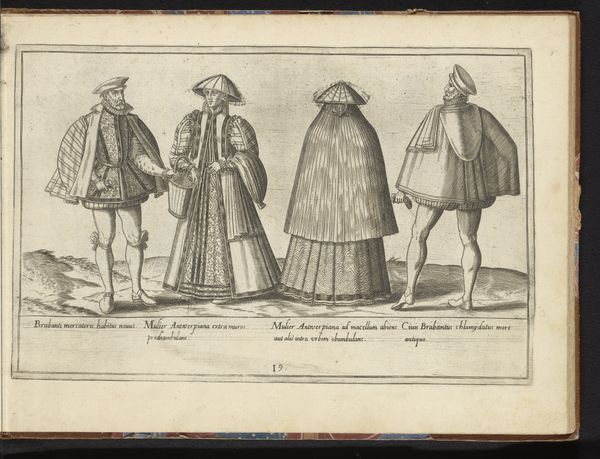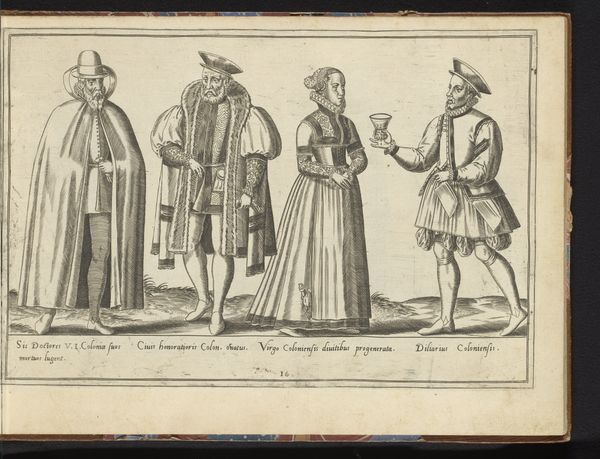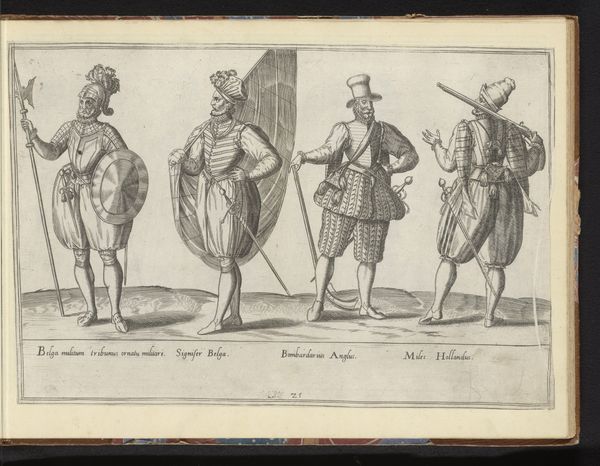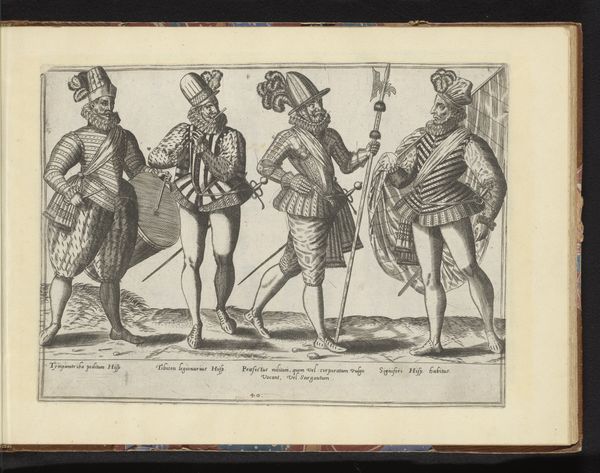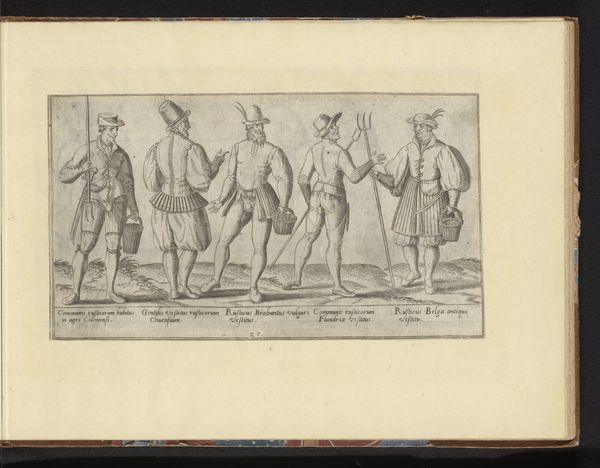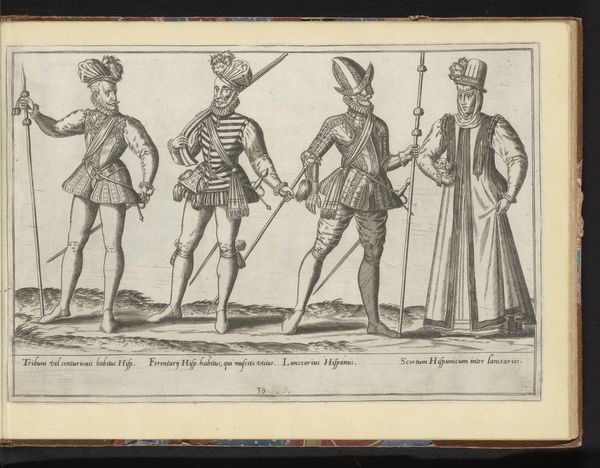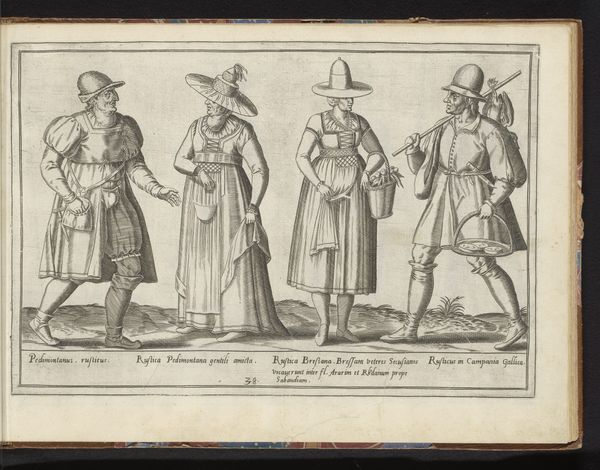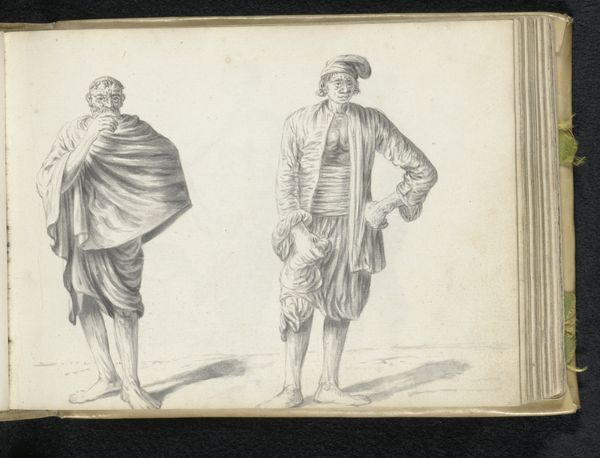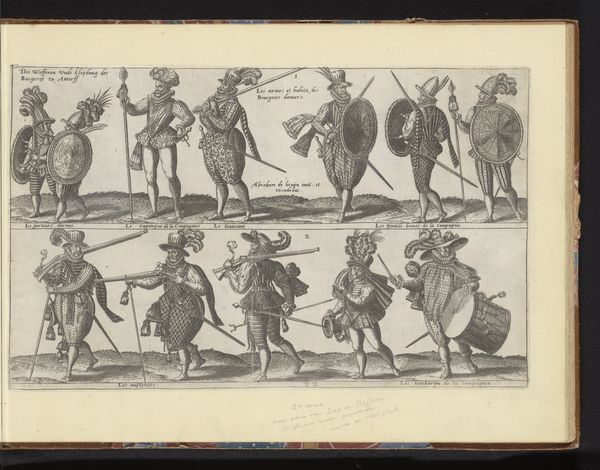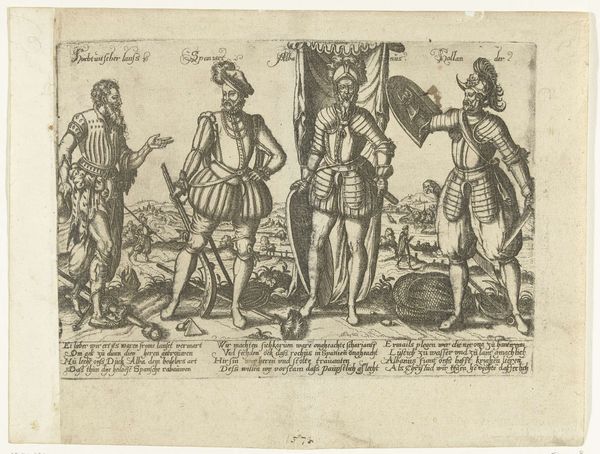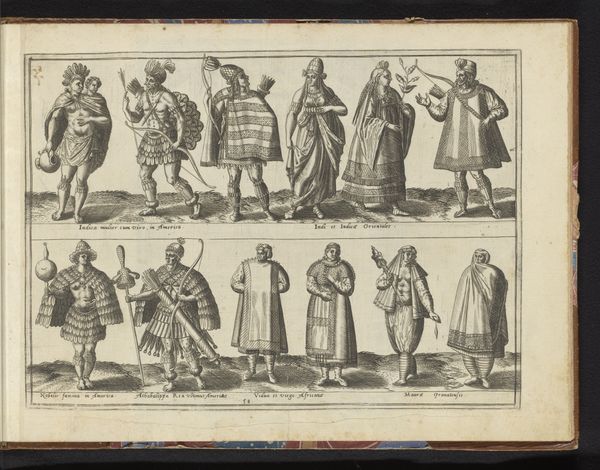
drawing, engraving
#
portrait
#
drawing
#
figuration
#
11_renaissance
#
history-painting
#
engraving
Dimensions: height 265 mm, width 360 mm
Copyright: Rijks Museum: Open Domain
Curator: So, we're looking at Abraham de Bruyn's engraving, "Four Men Dressed According to the Fashion in Germany, ca. 1580", created around 1581. The Rijksmuseum holds it. Editor: It's a fascinating piece! My initial impression is just how much clothing defined identity then. I’m struck by the almost exaggerated silhouettes. What jumps out at you when you look at it? Curator: I immediately see it as a powerful statement on social hierarchy and gender expression in Renaissance Germany. Think about the performative aspect of dress during that time. Who do you think these men represent in society? What messages were they trying to communicate through these outfits? Editor: They certainly seem like wealthy noblemen given the detail and embellishments. Perhaps they wanted to emphasize their status, masculinity and authority through their attire. What about you? Curator: Exactly. It goes deeper than just wealth. Notice how each man presents a subtly different version of masculinity. These engravings acted as both a reflection and a reinforcement of existing social power dynamics, dictating ideals of beauty and propriety but what about the implicit power that comes with controlling access to these images? It makes me wonder about who consumed such images. Editor: I hadn’t considered it that way – like a blueprint. Maybe these images normalized and reinforced social stratifications? The engraving medium meant it was somewhat reproducible but still likely for consumption by upper-class citizens. Curator: Precisely. Art doesn’t exist in a vacuum; it's interwoven with cultural narratives that shape our perceptions of gender, class, and identity. And what we see here underscores the complex relationship between power and representation. Editor: I never considered the influence of an apparent dress code on individuals. I now understand the relevance of analyzing a fashion plate through those perspectives. Thank you.
Comments
No comments
Be the first to comment and join the conversation on the ultimate creative platform.
